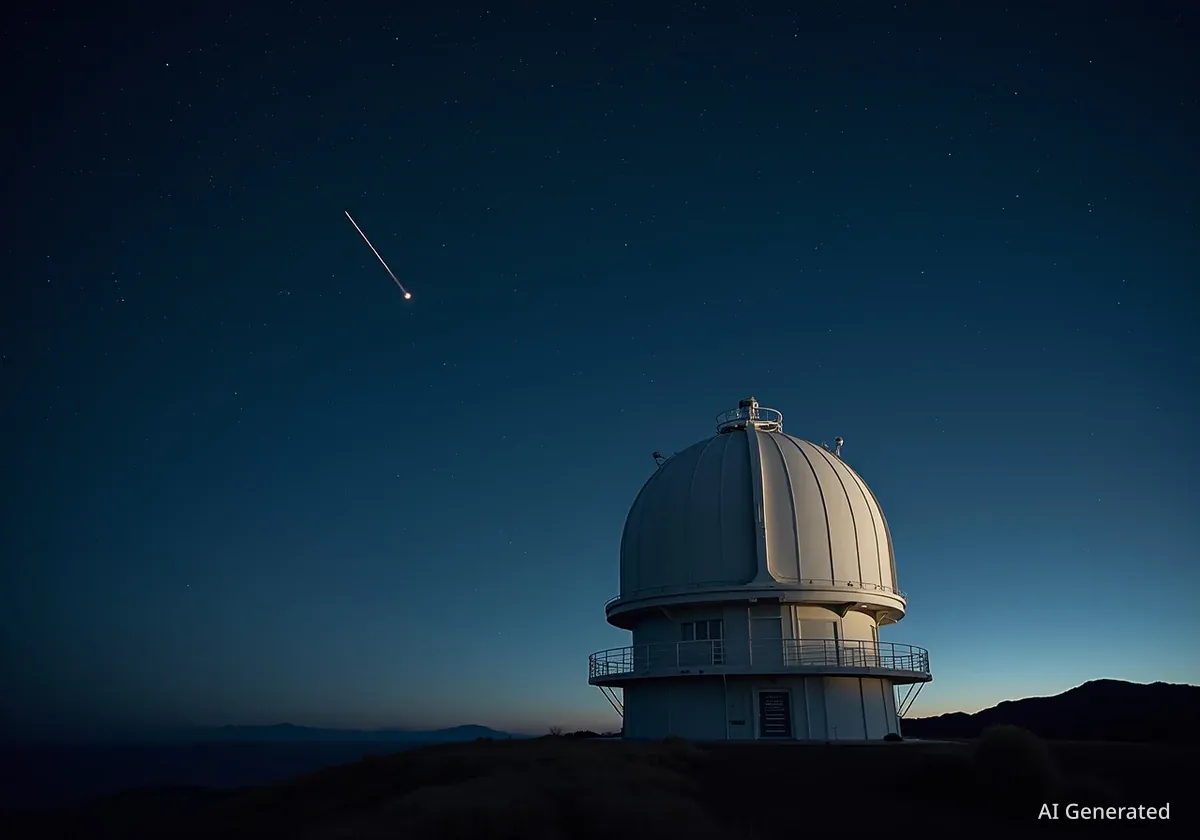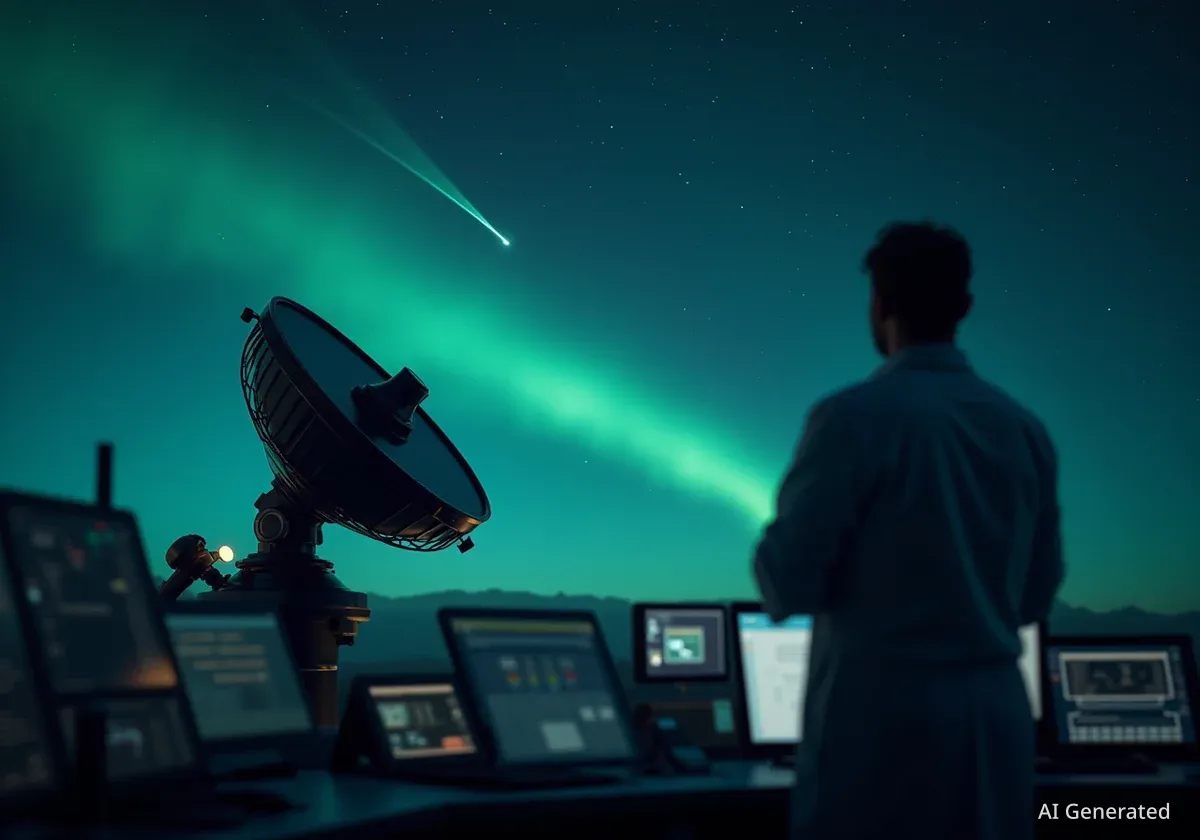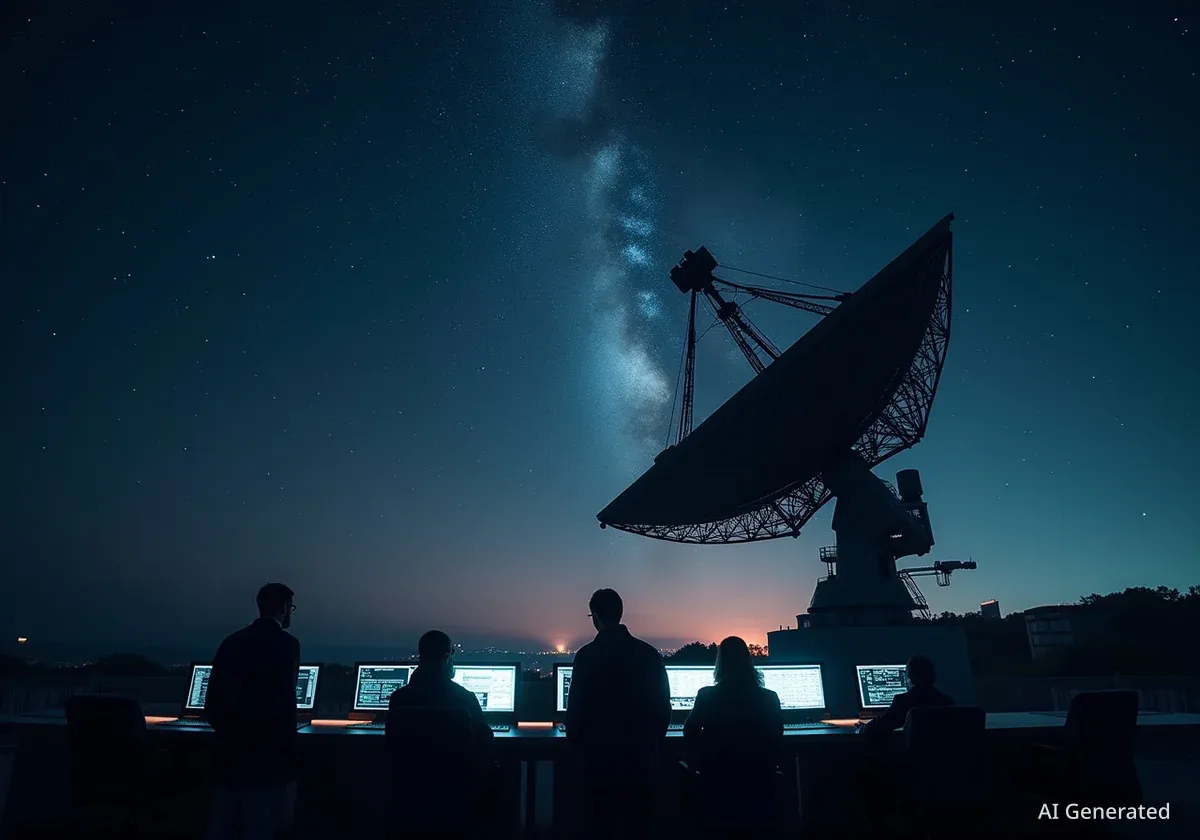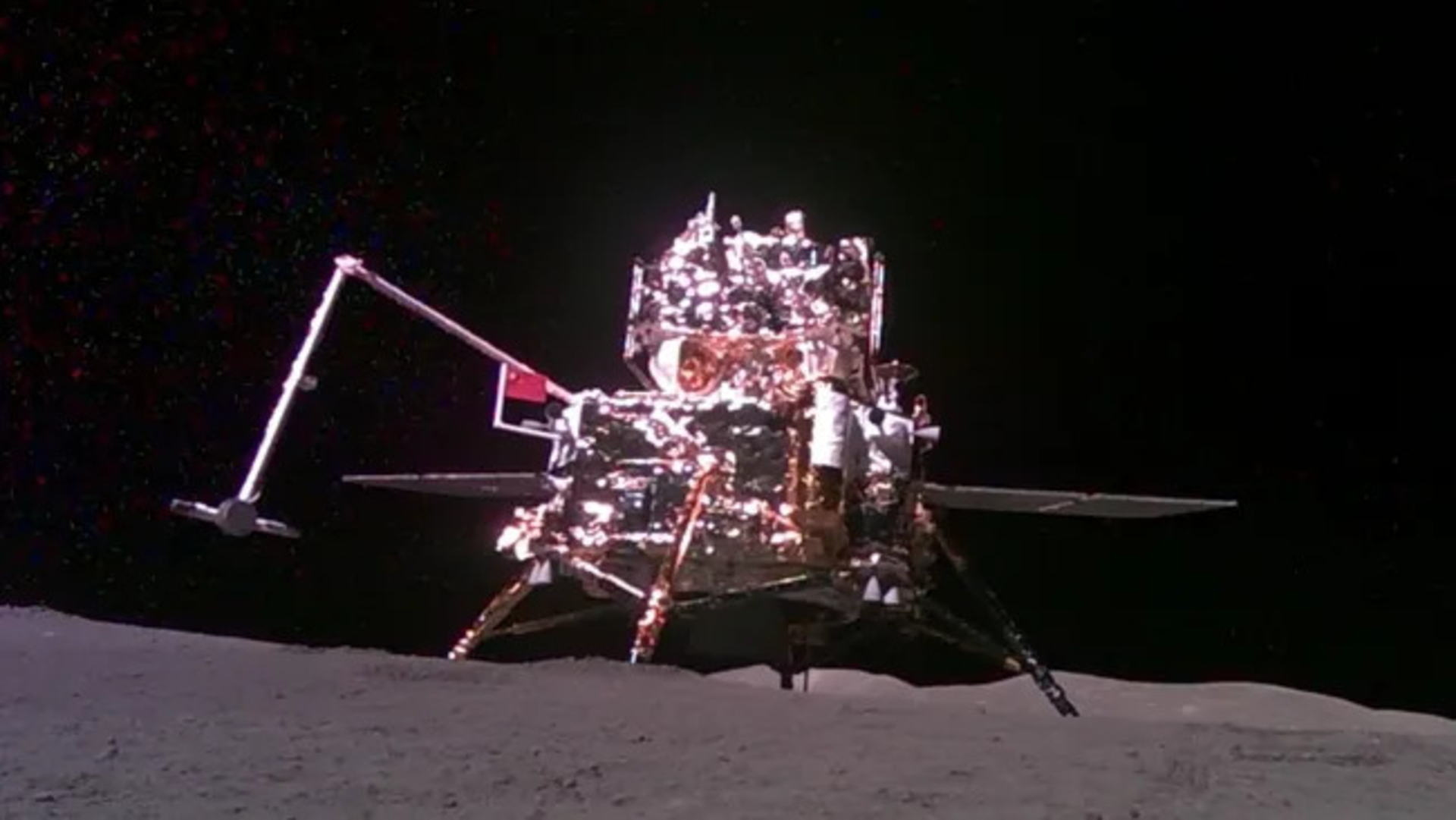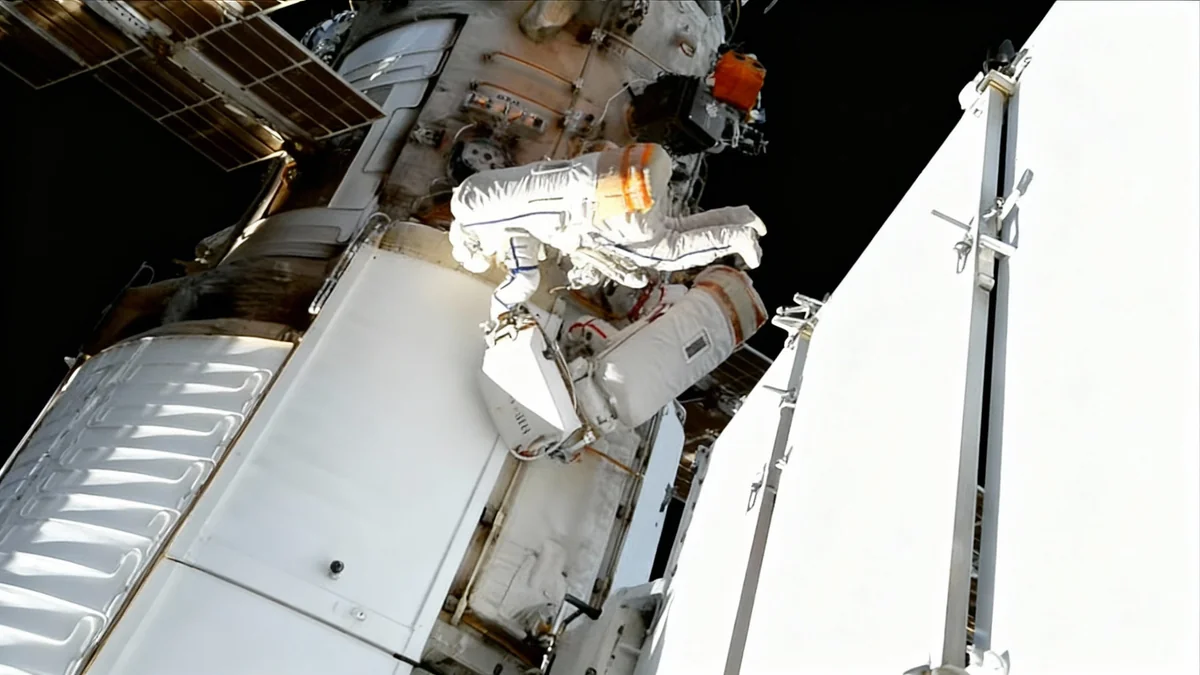A long-exposure photograph from the Gemini North telescope in Hawaii captures a growing problem for astronomers worldwide. The image shows not only the familiar trails of stars but also the increasingly common streaks left by orbiting satellites, highlighting a significant challenge to modern astronomical research.
Key Takeaways
- An image from the Gemini North telescope shows light trails from both stars and an increasing number of satellites.
- The rise of large satellite constellations, such as those for global internet, is the primary cause of this increased light pollution.
- Satellite streaks can contaminate scientific data, obscure faint celestial objects, and complicate astronomical analysis.
- Organizations like the Center for the Protection of the Dark and Quiet Sky (CPS) are working to address the issue.
A Crowded Sky Over Mauna Kea
The image in question was captured at the Gemini North facility, located atop Mauna Kea in Hawaii. During a long-exposure shot, where the camera's shutter remains open for an extended period, celestial objects appear to move across the sky, creating trails of light. While star trails have long been a feature of such images, the new additions are bright, straight lines from human-made satellites.
These satellite streaks are becoming a frequent and disruptive element in astronomical observations. They are the result of sunlight reflecting off the surfaces of satellites orbiting Earth. As thousands of new satellites are launched, the night sky is becoming progressively brighter and more cluttered with these fast-moving points of light.
The International Gemini Observatory
The Gemini North telescope is one of two identical 8.1-meter telescopes that form the International Gemini Observatory. Its counterpart, Gemini South, is situated in the Atacama Desert in Chile. This strategic placement allows astronomers to observe the entire sky from both the Northern and Southern Hemispheres, providing comprehensive coverage of the cosmos.
The Rise of Satellite Mega-Constellations
The primary driver behind the increase in satellite streaks is the deployment of large-scale satellite constellations. Companies like SpaceX with its Starlink network and Amazon with its planned Project Kuiper are launching thousands of satellites into low-Earth orbit. The goal of these projects is to provide global broadband internet and other communication services.
While these technological advancements offer significant benefits for global connectivity, they have an unintended consequence for science. The sheer volume of these reflective objects in orbit dramatically increases the likelihood of them passing through a telescope's field of view during a sensitive observation.
A Rapidly Growing Number
As of early 2024, there are over 9,000 active satellites orbiting Earth. Projections suggest that tens of thousands more could be launched in the coming decade as commercial constellations expand. This rapid growth presents an escalating challenge for ground-based observatories.
Impact on Astronomical Research
The presence of satellite streaks in astronomical data is more than just a minor inconvenience. It poses a serious threat to the accuracy and viability of scientific research. The bright light from a passing satellite can saturate a telescope's detectors, effectively blinding it for a moment and creating artifacts that can be mistaken for celestial phenomena.
Specific Research Areas Affected
This interference complicates the study of numerous cosmic events and objects. The challenges include:
- Studying Distant Galaxies: The faint light from galaxies billions of light-years away can be completely washed out by a satellite streak.
- Discovering Near-Earth Asteroids: Identifying potentially hazardous asteroids requires detecting small, faint objects moving against a dark background. Satellite trails can obscure these objects or create false positives.
- Analyzing Exoplanet Atmospheres: Detecting the subtle chemical signatures in the atmosphere of a planet outside our solar system requires extremely precise measurements, which can be corrupted by satellite interference.
Correcting for this contamination is a difficult and time-consuming process for researchers. In some cases, the data from an observation that took hours to collect can be rendered entirely unusable by just a few passing satellites.
Global Efforts to Protect Dark Skies
The astronomical community is actively working to address this issue. The U.S. National Science Foundation's NOIRLab, which plays a key role in operating the Gemini Observatory, is a co-host of the Center for the Protection of the Dark and Quiet Sky from Satellite Constellation Interference (CPS).
CPS is an international collaboration that brings together astronomers, satellite operators, and policymakers. Its mission is to coordinate research and develop mitigation strategies to preserve the natural state of the night sky. This includes advocating for satellite designs that reduce reflectivity, developing software to predict and avoid satellite passes, and establishing best practices for satellite deployment.
The goal is not to halt technological progress but to find a sustainable path forward where both satellite-based services and ground-based astronomy can coexist. The image from Gemini North serves as a clear reminder of the urgency of these efforts to protect our window to the universe for future generations.

